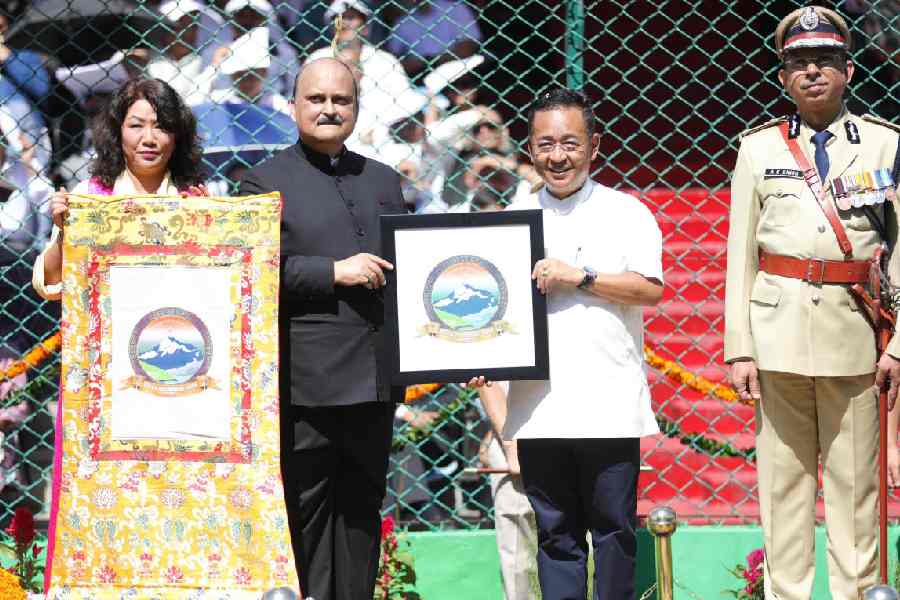The Sikkim government unveiled a commemorative logo on Independence Day to mark its golden jubilee year of statehood following its merger with India on May 16, 1975.
The state home department has been made the nodal agency to coordinate the year-long celebration, which will kick off on State Day (May 16) next year.
Sikkim chief minister Prem Singh Tamang (Golay) said Prime Minister Narendra Modi has “in-principle” accepted the invitation to be the chief guest during the inaugural day of the celebration.
The logo, which Golay unveiled on Friday, captures “the essence of Sikkim’s cultural richness, natural splendour and deep-rooted values”.
The logo is encircled by gya-nak-chari motif, a design emblematic of the wisdom and protection in Himalayan heritage. The logo also shows Mount Kanchenjunga, the rich paddy fields of Sikkim, the Teesta, the Indian flag in the background, the national emblem and Sikkim's emblem Kham-sum-wangdu.
The Sikkim emblem was designed in 1887 and was used as a royal seal by the rulers of Sikkim or Chogyals from the 1950s.
Phuntsog Namgyal was crowned as Sikkim’s first Chogyal in 1642 and the Namgyal monarchy ruled the Himalayan state for three centuries until its merger in 1975.
Sikkim’s last ruler Chogyal Palden Thondup Namgyal was crowned in 1965.
However, in 1973, an agitation broke out in Sikkim with a section demanding a written constitution, fundamental rights, universal adult franchise and abolition of a reservation formula prevalent in Sikkim then.
A weeklong fast for “democracy” was also held in capital Gangtok but with the Durbar under Chogyal not willing to succumb to the demands, thousands took to the streets for three days from April 3, 1973. Six people were killed while hundreds were injured in the agitation.
Some political parties from Sikkim had approached then Prime Minister Indira Gandhi for intervention to restore law and order in Sikkim, as it was officially a protectorate state of India.
Chogyal was also persuaded to make a plea to India to take over the administration of Sikkim until a solution was worked out.
Subsequently, an agreement between the political parties, Chogyal and the Indian government was signed, which many say drastically reduced the powers of Chogyal.
It was also agreed that the Sikkim Assembly would have 32 seats from 17 and that while the Bhutia/Lepcha and Nepali communities each would have 15 seats reserved, the Sangha and the SC communities were given one seat each.
In the 1974 elections, the Sikkim Congress won 31 of the 32 seats.
Following the election, the Sikkim Assembly held a referendum and according to its results, the government of India decided to accord the status of a full-fledged state of India to Sikkim.
The thirty-sixth Amendment Bill, 1975, was passed by the Lok Sabha and the President gave assent to the bill on May 16, 1975.










